the rich symbolism they carry, representing love, prosperity, and the promise of new beginnings. Let's Explore...
Few flowers in the enormous tapestry of natural wonders inspire as much awe and intrigue as tulips. These intriguing flowers, whose roots are firmly ingrained in the historic regions of Central Asia, have travelled across time and captured the hearts of people in many countries and continents.
The rich symbolism of tulips, which stand for love, prosperity, and the promise of fresh starts, adds to their attractiveness in addition to their captivating look. Tulips have left an enduring impression on the history of flowers, from their historical significance—which includes the alluring "Tulip mania"—to their stunning variety, which creates a rainbow of colors in landscapes.
1. Origin of Tulips: A Tale of Exotic Origins
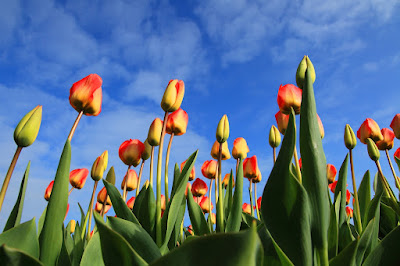 |
| Spring tulip |
Gorgeous tulips, which signal spring, have a fascinating past that extends back to Central Asia's prehistoric epoch. Because of the wide range of temperatures at which they were born, these beautiful blooms have a special history. What are now Kazakhstan, Afghanistan, Iran, and Turkey were their ancestral territories.
It is thought that the word "tulip" came from the Turkish word "tülbent," which translates to "turban," possibly because the flower resembles the traditional headdress. Several centuries ago, the Ottomans were among the first to cultivate tulips and appreciate their beauty, including them into their carpets, paintings, and architectural projects. Botanists and horticulturists took note of the bloom as its popularity grew in sixteenth-century Europe.
2. A Kaleidoscope of Colors and Forms
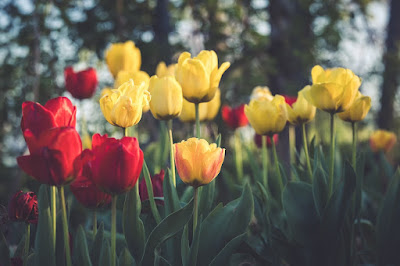 |
| Various tulip |
Tulips are celebrated for their captivating appearance, offering a kaleidoscope of colors and an array of striking forms. These elegant blooms showcase an impressive spectrum of hues, ranging from bold and fiery reds, oranges, and yellows to delicate pastels and pristine whites. The exquisite cup-shaped flowers typically consist of six distinct petals, and within this simple structure, nature weaves an astounding tapestry of patterns and variations.
Various tulip varieties feature unique petal shapes, edges, and textures, adding to the allure of these charming flowers. From the graceful, pointed petals of the Lily-flowered tulips to the flamboyant, fringed edges of Parrot tulips, each variety has its distinctive charm, making them a true delight for flower enthusiasts and gardeners.
3. Cultivating Tulips: Nurturing Beauty from Bulbs
 |
| Cultivating tulips |
The fascinating and age-old art form of tulip gardening entails growing these delicate blossoms from bulbs. Tulip bulbs are sown in the fall to begin the process before the ground freezes. The bulbs can go through a time of winter hibernation since they are planted early, which is crucial to their development and the effectiveness of their spring bloom.
Proper spacing, well-drained soil, and an abundance of sunlight are essential for successful tulip growing. Tulips dislike damp soil because it can promote bulb rot, and they grow best in full sun or mild shade. With proper care, tulips can bring breathtaking beauty to gardens year after year.
4. Symbolism of Tulips: Love, Prosperity, and Renewal
 |
| Tulips symbolism |
Blossoms are deeply symbolic and have always been associated with intense feelings and ideals. Tulips are a well-liked option for displays of devotion and Valentine's Day bouquets because of their widespread connotations with romance and love. They also stand for success, good fortune, and material wealth and prosperity.
Given that tulips have a life cycle that begins with a dormant bulb and culminates in a magnificent bloom in the spring, they are often associated with fresh starts and rebirth. Tulips are associated with optimism and hope throughout the spring, when the natural world is being revived and better times are anticipated.
5. Historical Significance: The Tulip Mania and Beyond
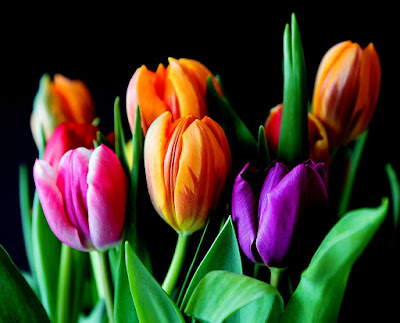 |
| Tulip historical |
Tulips have captured the hearts of flower enthusiasts and had a significant historical impact. In the Netherlands during the 17th century, tulip bulbs caused a speculative frenzy that became known as "Tulip mania." At this time, tulip bulbs became an enormously desirable commodity, and their values surged to unthinkable heights, inciting a bubble of speculation.
Even after the first tulip mania passed, tulips remained essential to Dutch trade and culture. Tulip festivals honor the tulip's ongoing significance to Dutch horticulture tradition.
6. The Dazzling Array of Tulip Varieties: A World of Diversity
 |
| Tulip varieties |
The skill of hybridization and breeding has produced a dizzying number of tulip variations, each with its own distinct appeal. There is a tulip to fit every taste and garden design, from the graceful Darwin tulips with their solid stems and classic shapes to the elaborate and colorful Parrot tulips with their fringed and feathered petals.
Based on their traits, tulip varieties are divided into several groups, such as the Darwin, Triumph, Fringed, Lily-flowered, and Parrot groups. Because of their diversity, tulips are a beautiful and adaptable addition to any environment, allowing gardeners and floral aficionados to explore an unending tapestry of colors, patterns, and forms.
7. Growing Conditions: Nurturing Tulips to Flourish
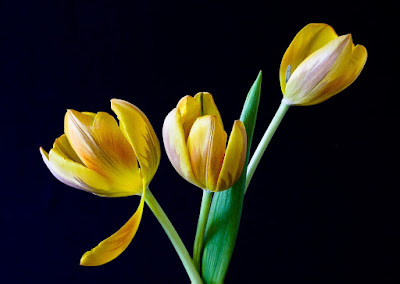 |
| Vibrant tulips |
It is crucial to provide the right growing conditions for tulips in order to produce a colorful and robust crop. Well-drained soil is ideal for these flowers as it helps avoid soggy roots and bulb rot. Although they love the sun, they can also survive in some shade, so they work well in a variety of garden environments.
In order to encourage the best possible growth and flowering, tulips are typically planted in the fall, with their bulbs placed precisely at the proper depth. Throughout the growth season, enough irrigation is crucial to maintain their development, especially during dry spells. Tulips can provide their captivating beauty year after year with the right maintenance, making them a treasured focal point of any garden setting.
8. The Versatile Usage of Tulips: From Gardens to Celebrations
 |
| Tulips |
Tulips are a popular flower for a variety of reasons because of its adaptability in different environments. Their captivating array of hues and shapes adorns gardens, parks, and communal areas, infusing the scenery with a hint of refinement and allure.
Tulips are used as ornaments, but they also have great cultural and celebratory significance in many places. They are a main part of spring festivities, which commemorate the beginning of the season and represent hope and renewal. Tulips, with their magnificent presence, enliven celebrations and elevate moods, whether they are featured in modest bouquets or grand floral arrangements.
9. Allergenic Potential: Considerations for Sensitivities to Tulips
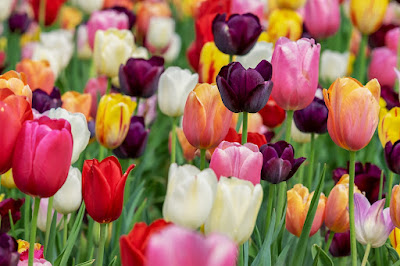 |
| Tulips |
Tulips' beauty captivates us, but it's crucial to be mindful of potential allergic reactions. Some people may have skin irritations from touch with the plant, or they may be sensitive to tulip pollen. Consider personal sensitivities and handle tulips with care, just like any other flower, to ensure a happy and allergy-free experience.
All things considered, tulips' captivating beauty, deep symbolism, and historical significance never cease to attract people around the world. Tulips are a well-liked and traditional symbol of the arrival of spring and the splendor of nature. They can be used to adorn gardens, give flair to occasions, or just make people happy.
In conclusion
Tulips stand as a timeless testament to the beauty and grace that nature bestows upon the world. From their exotic origins in Central Asia to their widespread admiration across the globe, tulips have woven a rich and colorful legacy.
Symbolizing love, prosperity, and hope, these alluring blooms have played a significant role in history, transcending time and cultures. With their mesmerizing appearance and diverse varieties, tulips continue to inspire wonder and joy in gardens, celebrations, and hearts alike. As each spring unfolds, these delicate flowers paint the world with vibrant hues, leaving an enduring imprint on the landscape and in the hearts of those who behold them.
Are you ready to begin growing tulip plants? Follow us for more gardening advice and plant-growing suggestions. Please share this post with other enthusiasts and subscribe to our blog and social media networks.










Join the conversation